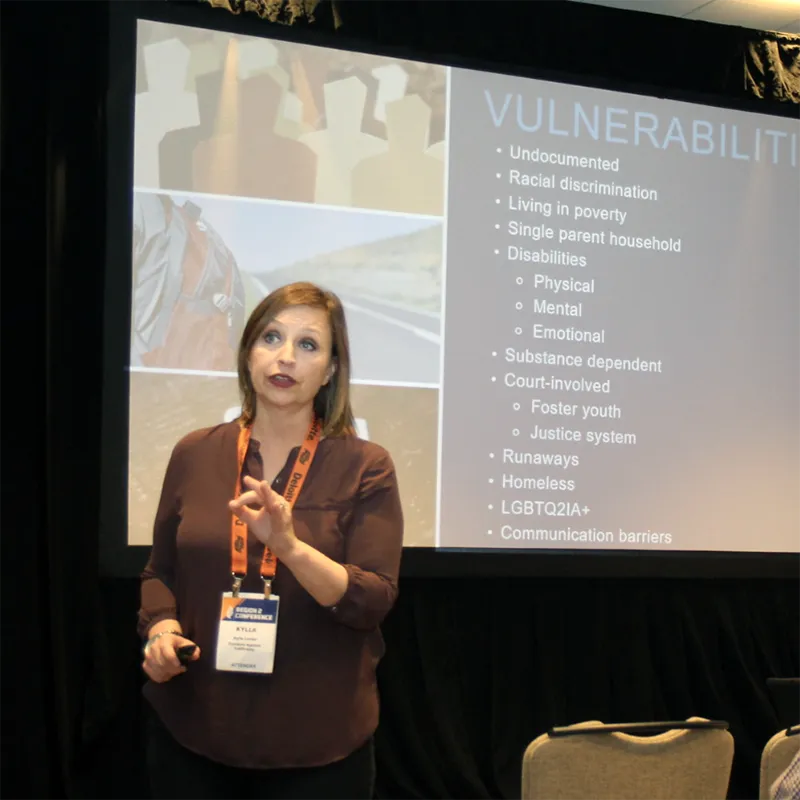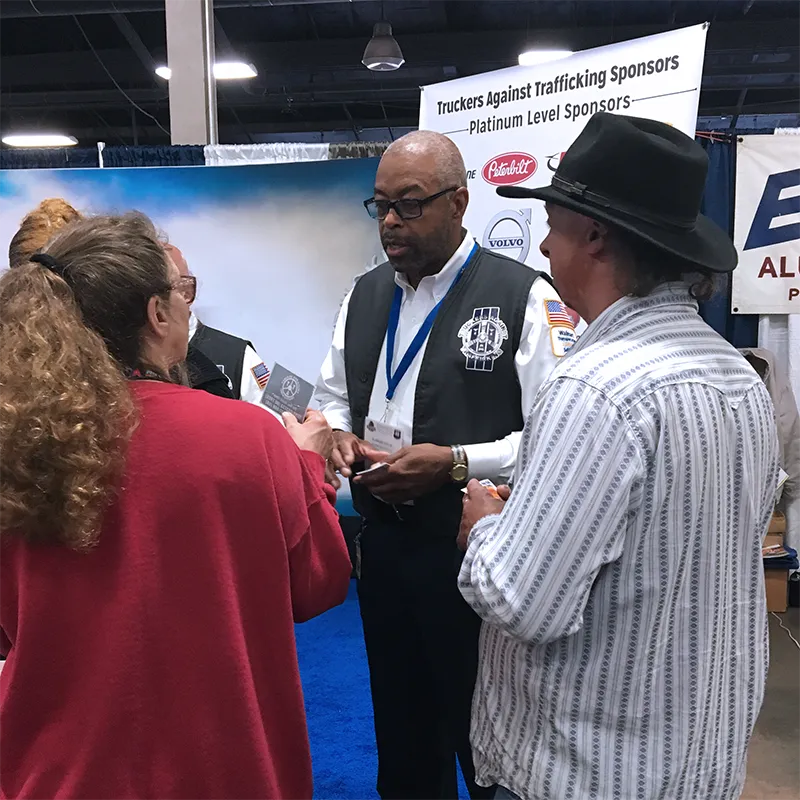Law enforcement is on the front lines in combating human trafficking.
To successfully fight human trafficking, law enforcement officers need to understand the nuances of this crime, including the tactics traffickers use and the populations most vulnerable to being victimized. They also must be fluent in human trafficking indicators, actively look for signs of trafficking when called to the scene and always employ a victim-centered approach.
In addition to investigating and prosecuting human trafficking, agencies can multiply their efforts by partnering with trained transportation professionals. Through public and targeted awareness campaigns, agencies can mobilize key industries in their states and provinces to be an extra set of eyes and ears on the roads and in communities.
law enforcement trained on how to recognize human trafficking.
TAT partners with law enforcement agencies to train their officers on human trafficking and equip them with the tools they need to utilize their entry points to the transportation industry to enhance awareness.
Prioritize Counter-Trafficking Initiatives.
Without leadership committed to combating human trafficking, nothing gets done. To effectively address this crime, leaders must embed anti-trafficking initiatives into the core of their agency.
Review TAT’s guide for command staff, which includes a summary of TAT’s recommendations and resources for law enforcement.
Bring TAT’s training to your agency.
TAT offers free, online training modules for law enforcement, which include interactive features and an accompanying e-toolkit. Sessions are presented by law enforcement command staff, human trafficking survivors, victims’ advocates and TAT trainers. For select law enforcement audiences, TAT provides in-person, in-depth training.
Spread awareness within your networks about human trafficking.
TAT’s Iowa Motor Vehicle Enforcement (Iowa MVE) and Canadian Commercial Vehicle Enforcement (Canadian CVE) models activate law enforcement and government agencies to spread human trafficking awareness. With six core elements to achieve full implementation, the Iowa MVE and Canadian CVE models are helping to build a mobile army of transportation professionals to combat this crime.
Contact TAT to get started.
Contact us
TAT in Action
TAT-trained Illinois State Police Trooper Zachary Heard pulled over a pickup truck on a traffic violation. The vehicle included a male driver and a female passenger. Trooper Heard noticed the passenger trying to make herself small, as if she were distancing herself from the driver. He also noticed drug paraphernalia and discovered a large quantity of narcotics. Narcotics detectives arrested the driver.
Meanwhile, Trooper Heard spoke with the female, who had a large tattoo in Spanish covering her forearm. While Trooper Heard spoke Spanish, he discovered the victim did not. Her explanation of the tattoo was so convoluted that Trooper Heard suspected human trafficking. He offered to connect her with resources, but she refused. Respecting her choice, he helped her get to a safe place and they exchanged numbers. A few days later, Trooper Heard called her and introduced her to a TAT survivor-leader who spoke with her about service providers in her area.






